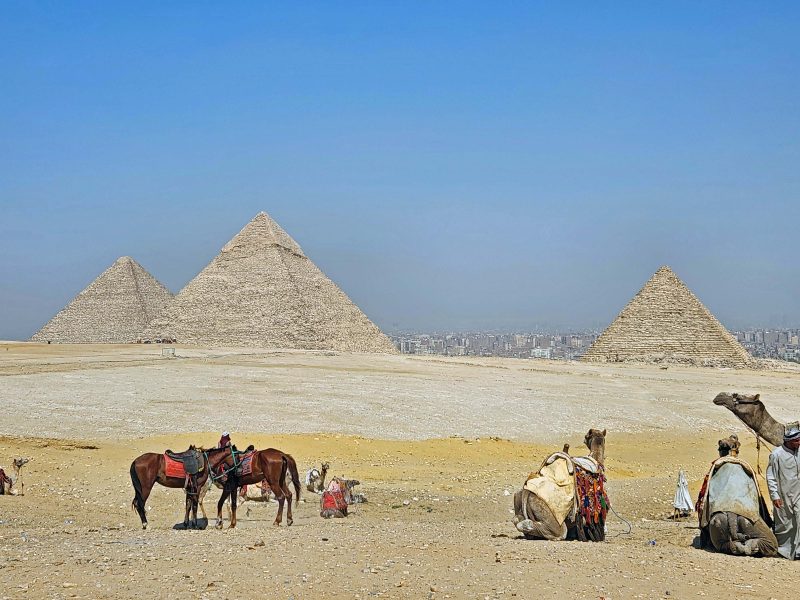On our fourth day in Cairo, we visited the Church of the Virgin Mary, aka, the “Hanging Church,” in Old Cairo. This part of Cairo is also called Coptic Cairo because it was a stronghold of Christianity in Egypt before and during the Islamic era. (Coptic is a generic term for Egyptian Christians.) The church was probably built around 690-692.
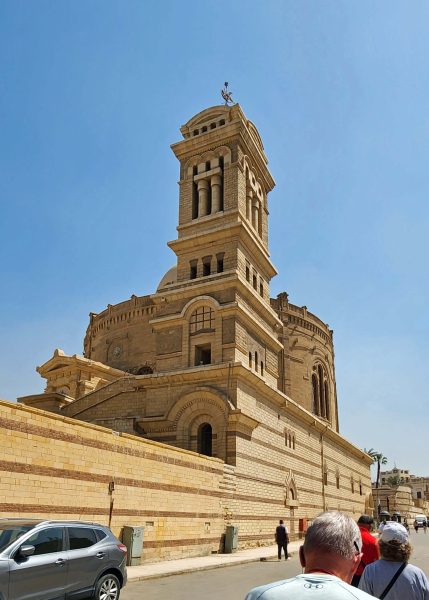

The courtyard at the entrance to the church has decorations scattered on its surface.
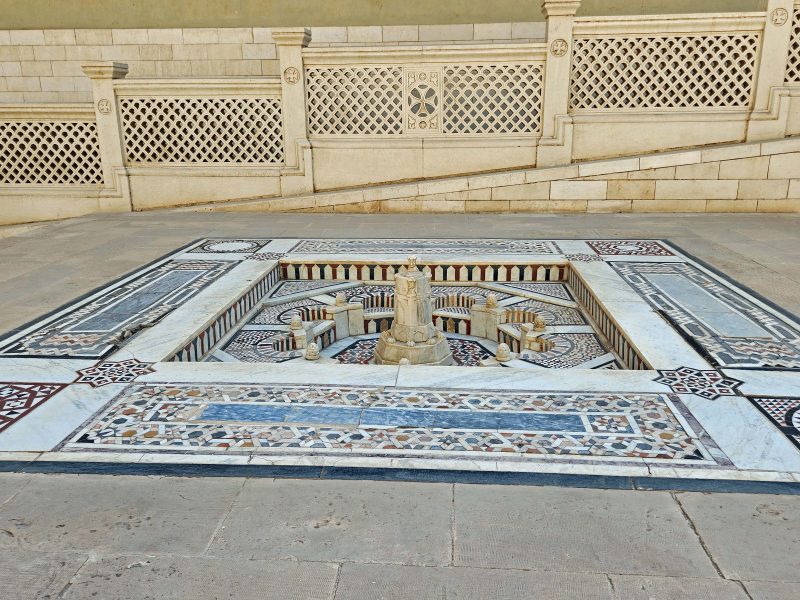
This is the front entrance to the church.
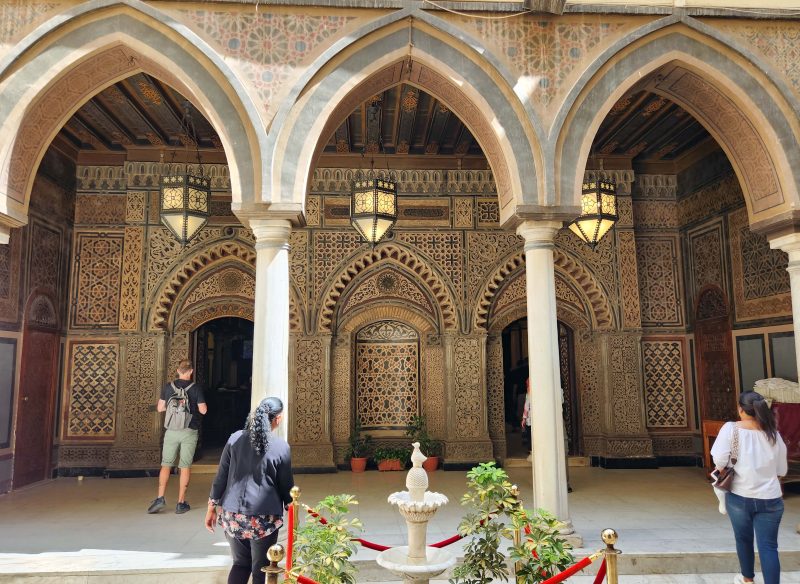
The Hanging Church is not actually suspended. The nave of the church is built on top of the gates of an old Roman fortress and there is an open passage between the gates and beneath the church. You can’t see the open passage through the scratched plexiglass in the photo below, but it’s there.
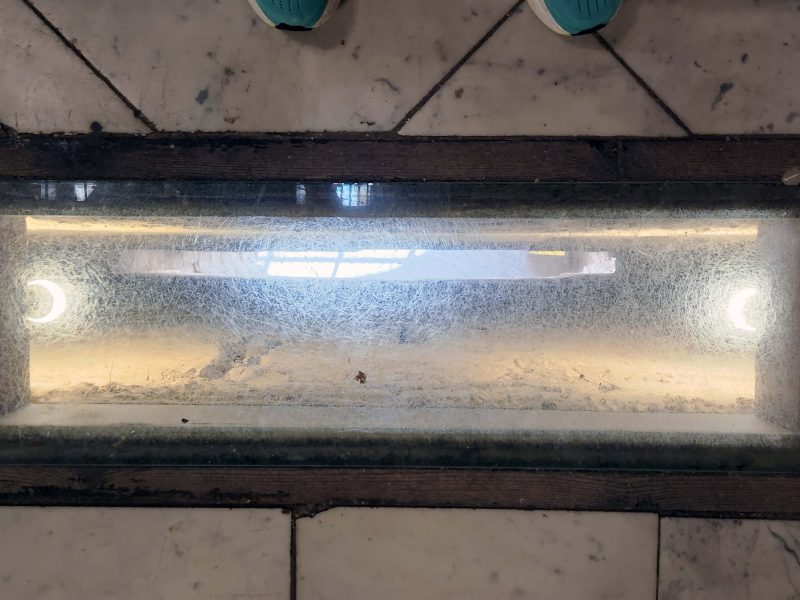
The church is beautifully ornate inside. Here is an icon of the Virgin Mary at the altar.
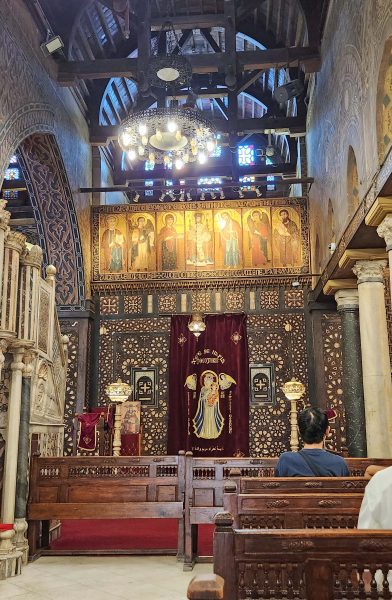
This is one of the stained-glass windows in the building.
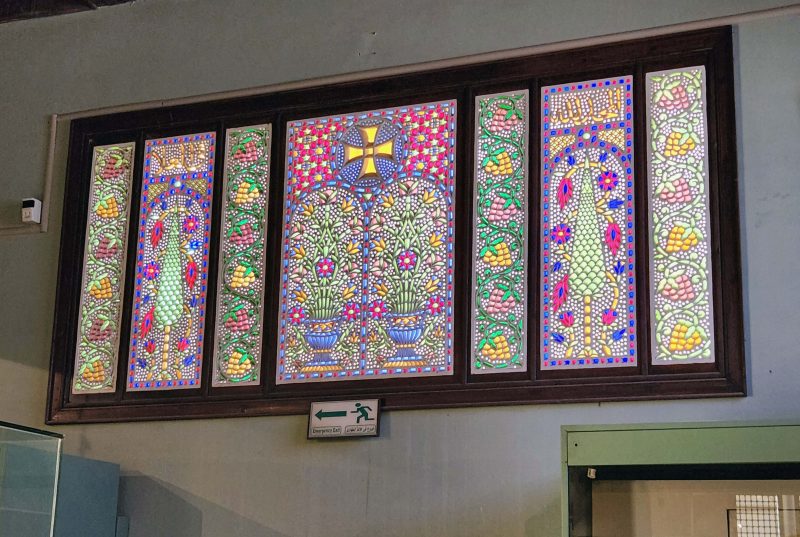
Here are two of the church ceilings.
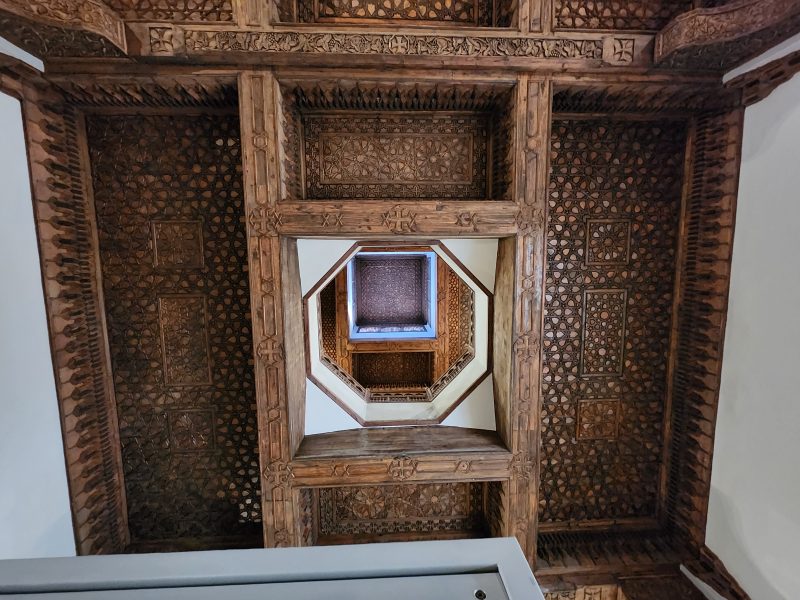
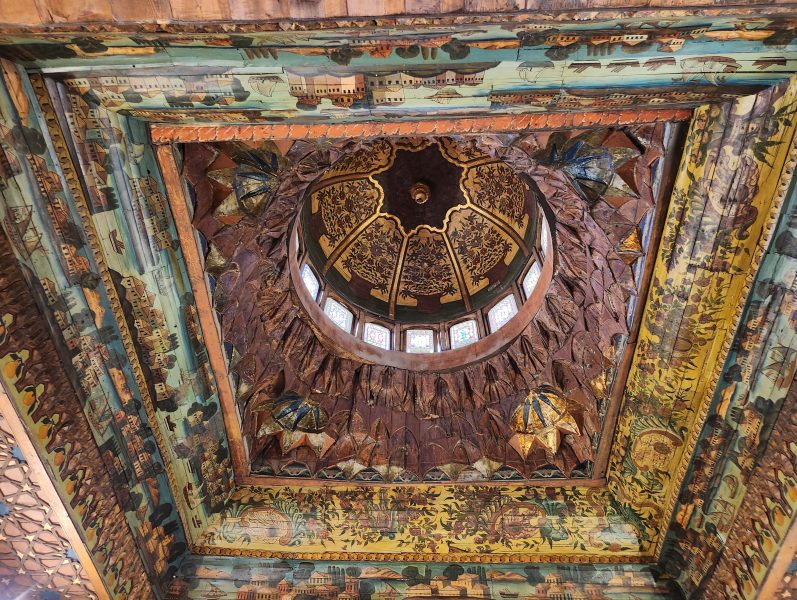
In the first century, women did not have equal stature to men, so they had to remain out of sight of the men. (On a personal note, 20 centuries later, we’re still waiting for equal stature.) “Windows,” like the brown box in the left photo below, allowed women to look into the church’s courtyard without being seen by the men.
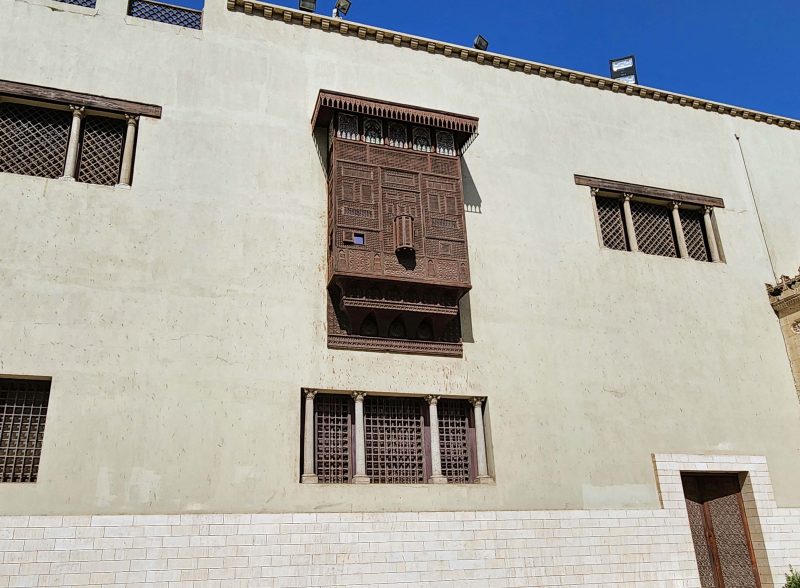
This picture shows the window box from the inside. From my photo distance, you can see blue sky and a darker building beneath it, but if you go up to the window to look through the openings, it’s possible to identify things in the courtyard.
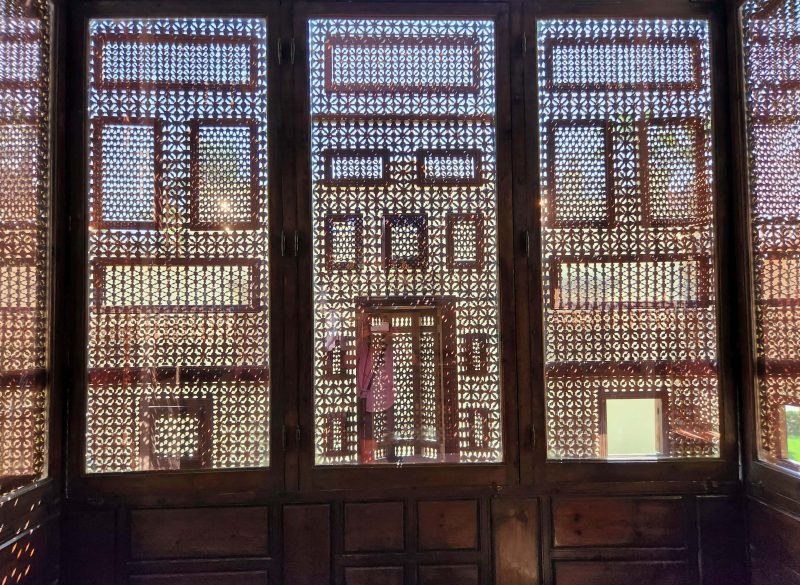
As we were driving back to our hotel, we passed this cemetery. The box-like structures are burial units. Families of the deceased add “rooms” to the units over time, much like the pharaohs did with their tombs and temples, but in a far more humble manner. Some of these rooms are currently used by homeless people for shelter. According to Hanan, homelessness is not a great problem in Egypt because there are laws requiring the wealthy to care for the poor, and because other laws prohibit demolishing any structure that is more than 100 years old. Homeless people are allowed to live in vacant structures and, in Cairo, there are over 1,200 areas designated for “irregular dwellings” that do not need to meet building codes. As a result, homeless people may build shacks or other structures in those areas without penalties. There is, mathematically, more housing than is needed in Egypt, but not all of it includes a safe environment, safe drinking water, or wastewater treatment. Even though these residents may not be homeless, they do not necessarily have a good quality of life.
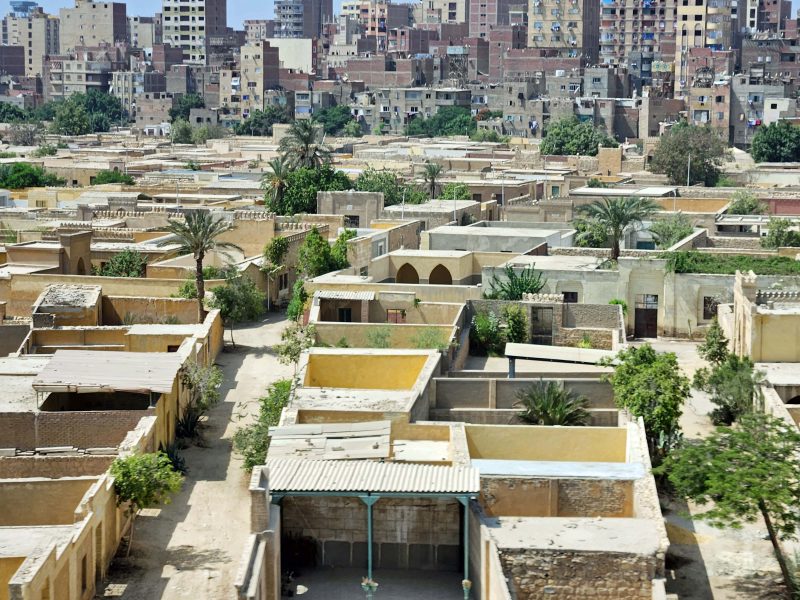
Every city and country has monuments to its heroes. This memorial honors the unknown soldiers who died to defend Egypt.
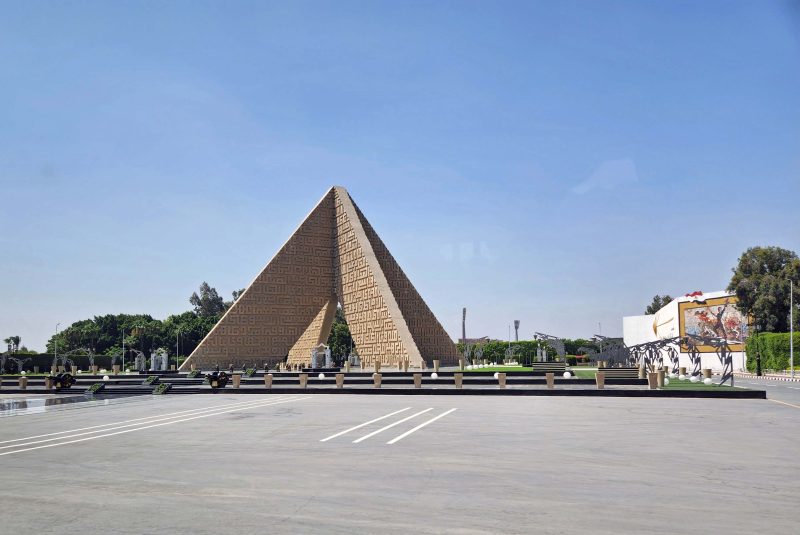
The tower on the right in this photo commemorates Egypt’s former president, Gamal Bidel Nasser.
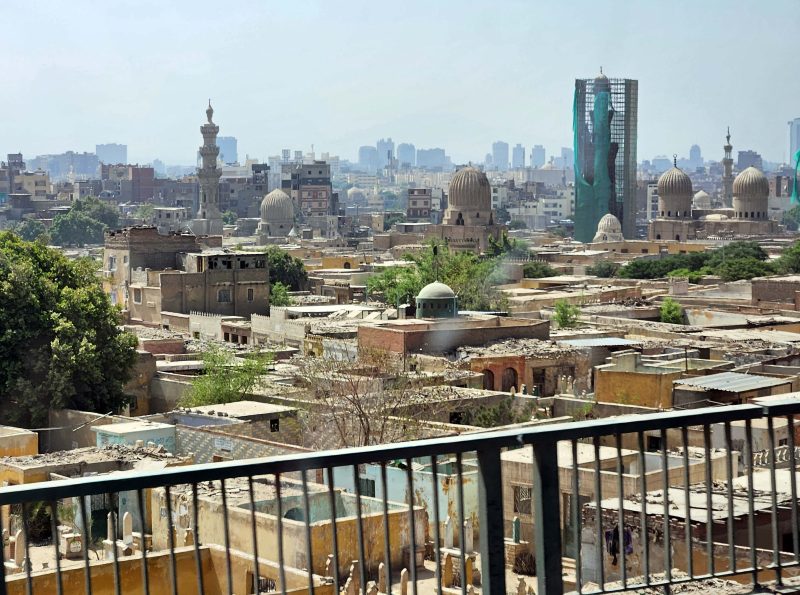
We’ll be back in Cairo in nine days to fly to Istanbul but, first, we are going to fly to Luxor tomorrow to begin our eight-day cruise on the Nile River. Here’s my favorite picture from the last four days. I think it clearly says “Egypt.”
